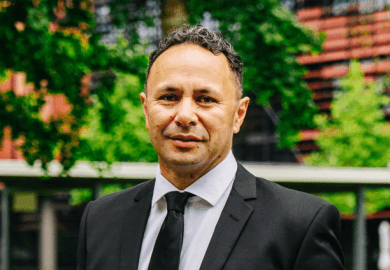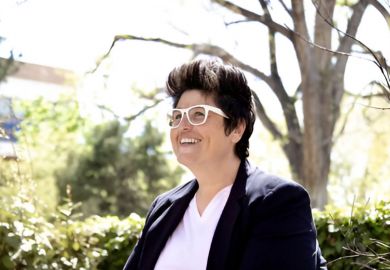When Chennupati Jagadish assumes the presidency of the Australian Academy of Science next May, he will be the first non-European to hold the position since physicist Sir Mark Oliphant was elected to lead the organisation’s inaugural council almost 70 years ago.
The academy is not Australia’s only scholarly institution whose leadership has rarely reflected the diversity of its staff, students or members. But the shortcoming is palpable in an organisation of Australia’s top research scientists, given the sector’s overwhelming reliance on talent from overseas – particularly countries such as China and Professor Jagadish’s native India.
A 2019 study found that international doctoral students outnumbered Australians in computer science, engineering and technology, and were rapidly gaining the ascendancy in the natural and physical sciences, with foreigners starting PhDs in these fields at four times the rate of locals.
THE Campus views: So you don’t think microaggressions have an impact?
But 15 of Professor Jagadish’s 19 predecessors as academy president were born in Australia. The others hailed from Austria, the Netherlands, New Zealand and Scotland.
“We’re moving in the right direction, but these things take time,” Professor Jagadish said, pointing out that 40 per cent of the fellows elected during the past five years came from outside Australia. Thirty-six per cent were women, he added, stressing the importance of diversity in gender and age as well as geographic background.
“Studies have shown that diversity really does create excellence in every aspect of life. [There is] still a long way to go; we just have to work hard. Let us hope that my election to the presidency of the academy, starting from a modest background, will inspire other people [to] aim high.”
Professor Jagadish is distinguished professor and head of the Semiconductor Optoelectronics and Nanotechnology Group in the Australian National University (ANU) Research School of Physics, which was also founded by Sir Mark Oliphant.
His work at ANU has delivered plenty of accolades, more than a dozen books, hundreds of journal papers and six US patents. Five relate to lasers, with Professor Jagadish devising some of the world’s smallest and finest.
His research has been applied to make flexible solar cells, to create optical devices for communication and data storage and to produce hydrogen by splitting water molecules. He has developed nanoelectrodes capable of reading and measuring signals from individual brain cells, as part of a project trialling treatments for Alzheimer’s disease.
All this seems far from his upbringing in a village in the southern Indian state of Andhra Pradesh, 250km from Hyderabad, which was short on extravagances and a long way from the local school. “We had to walk five miles on mud roads,” Professor Jagadish said.
“I had to study in front of a kerosene lamp. My father ended up migrating to an even more remote place. I had to go and live with my maths teacher, who generously hosted me for three years.”
It was a childhood of remoteness rather than poverty, Professor Jagadish stressed. The village now boasts electricity and plenty of mobile phones. But things were “challenging”, he acknowledged. “It teaches you tenacity and resilience.”
These attributes proved useful as Professor Jagadish applied for postdoctoral fellowships following his PhD studies at the University of Delhi. In the pre-internet world of 1980s India, he often learned about new openings after they had closed. “We used to get magazines by sea mail, six months late. I’d apply for anything I thought was relevant, but they all used to have deadlines. I had more than 300 rejection letters.”
Such experiences cultivated empathy for others living in big countries, far from the services many urbanites take for granted. “We need to develop technologies which will enable people in remote parts of Australia or any part of the world…to get access to education, because education is an uplifting thing for human beings,” he said.
After a stint at Queen’s University in Ontario, he arrived in Australia in 1990 armed with a two-year contract and a two-month-old son. Decades later, he harbours sympathy for younger colleagues at a time when jobs in university research are limited and grant success rates are marginal.
“But at the same time, people have to be adventurous, take some risks and go and explore,” he said. “Science is so global. We should be able to travel wherever there are opportunities.”
This mixture of empathy and exhortation has found expression in the Chennupati and Vidya Jagadish endowment, a scholarship and fellowship fund co-founded with his scientist wife, Vidya.
“We wanted to provide opportunities for students and younger researchers from developing countries to come and spend up to three months at ANU,” he said. “We hope that can open doors for them.”
POSTSCRIPT:
Print headline: ‘Diversity creates excellence’
Register to continue
Why register?
- Registration is free and only takes a moment
- Once registered, you can read 3 articles a month
- Sign up for our newsletter
Subscribe
Or subscribe for unlimited access to:
- Unlimited access to news, views, insights & reviews
- Digital editions
- Digital access to THE’s university and college rankings analysis
Already registered or a current subscriber?










